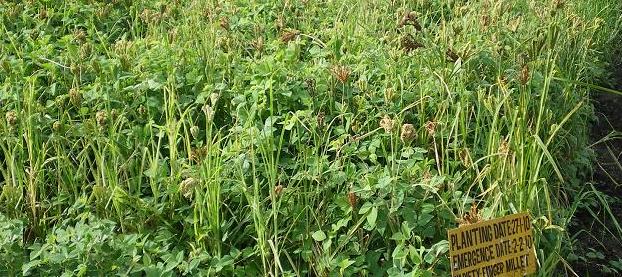Finger millet (Eleusine coracana (L.) Gaertn.), also known as African millet, is one of the main cereal crops grown in the drier areas of Asia and Africa. Finger millet is an indigenous African cereal that is well adapted to African semi-arid and sub-tropical agronomic conditions. It is grown globally on over 4 million hectares and is the primary food and cash crop for millions of people in tropical dry land regions. It is indigenous to Eastern Africa where it is grown by smallholder farmers, with Uganda (up to 500,000 ha), Ethiopia (238,000 ha) and Kenya (around 65,000 ha) being some of the major producers of the crop in the region. Finger millet has outstanding attributes as a subsistence food and fodder crop, and has nutritional qualities superior to rice and is equivalent to wheat. Despite the importance of finger millet as a food, cash and fodder crop, its productivity remains low in most of the areas where it is grown. The main biotic constraints upon its efficient production are stemborers and Striga.
We evaluated the potential role of greenleaf desmodium, Desmodium intortum (Mill.) Urb., in the combined management of Striga and cereal stemborers in finger millet in western Kenya between 2007 and 2008. Our results demonstrate that intercropping finger millet with D. intortum offers an effective means of control of both pests, leading to higher grain yields and economic returns. The findings of our study will thus lead to development of a suitable push–pull strategy for millet as has been done for maize.
Other adaptations will include development of similar approaches for other staple grain crops
|


 Research Partners
Research Partners